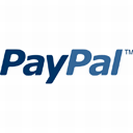What is "Google Analytics" and why do I need to use it?
Whether you hope to earn ad revenue or you're just curious about your customers' shopping habits, Google Analytics is a fantastic and free way to track and analyze activity on your own website. Page view counters are outdated and tacky; today's website builders and owners are more subtle, collecting view counts and user data behind the scenes. But why should you take this extra step and add Google Analytics to your own website?
Simple to use, even for the beginner
When you sign up for a free Analytics account, Google gives you a customized code in return for your original URL. You can use LiveCity to easily paste this within your website's code, and that's all you have to do. Google will now enjoy invisible access to your website, collecting precise data about each visit and each IP address that's used to access it. If everything was installed properly, you can then log into your Google Analytics account each day - separately from your web design or web host account - and view a variety of precise, useful data.
Learn who you're reaching (and not reaching)
One of the most prominent features on the Google Analytics home screen is a pie graph that denotes the percentages of new vs. returning visitors. A big percentage of returning visitors is good news for the blogger or online retailer; you're continuing to attract new views, increasing your opportunities to profit. However, if you run a service company or a brick-and-mortar establishment, your website might be a form of advertisement more than anything else. You want visitors and newcomers to find you during their searches for a good local business. Luckily, if you're not drawing in very many new visitors, Google Analytics will tell you immediately. It will also tell you exactly who you actually are reaching, listing everything from native language to location, service provider, and even screen resolution.
Putting Google Analytics data to good use
This invaluable service gives you the ability to quickly analyze behaviors that you might not have considered otherwise. For example, if the bounce rate (or rate at which new visitors immediately leave your website) seems to increase for users with certain mobile devices or operating systems, you might want to work on your browser compatibility or tweak your format to be more readable. This very detailed information is presented via dozens of separate pages and graphs, and you can spend hours navigating through the comparisons, trends, and suggestions that Google compiles. You can also opt into additional reports, such as "affinity categories" and "in-market segments". These are useful if you want to reach a certain target demographic or appeal to certain interests. However, when you enable these complex features, your tracking code changes and you must re-submit it via Live City.
The modern website is capable of reaching more people than ever before. It can also discreetly collect data about these people, giving you a better handle on the patterns, search engine queries, referral links, and demographics with which you're having the most success. Harness the power of Google Analytics to build your website and watch it blossom.
What is the Facebook "like" button and how do I use it?
It's hard to believe that just ten years ago, Facebook didn't exist as a marketing tool for businesses or websites. In fact, its current incarnation would be completely unrecognizable to its first batch of members, which consisted only of individual college students. Throughout the past decade, Facebook has evolved and amassed millions of users, redefining the way we communicate with each other. It's now ubiquitous in the world of online marketing, with the world's biggest corporations collecting "likes" and posting updates. In fact, it's hard to imagine a business that wouldn't benefit from social media exposure. Because it integrates photos and sub-pages - and encourages sharing - Facebook offers an unparalleled level of customization and free advertising for your website.
The "like" button simply allows users to express their approval for a post or a page, and the more "likes" you receive the more popular you are perceived to be. So how do you accumulate more likes?
Stay active on Facebook
The very best way to lure more "likes" is to stay active on Facebook itself. Post an update about each new blog post, product, and staff change, and fill the time in between with fun facts, expressions of employee or customer appreciation, and even useful information about related products and news.
Know your way around integrated tools
LiveCity offers a Social Bar element that allows you to link to different social media pages, via iconic logos that appear in your customized display. You can choose horizontal or vertical alignment, decide how to space each icon within the bar, and add or delete different social media URLs as you update your web presence. The Facebook like button is a separate element, and it gives your readers the option of sharing their activity with their Facebook followers. In order to do this, they must link their Facebook account information through your website or use their mobile device to pull up the app and activate the feature.
In addition to the "thumbs up" icon that indicates how many people "like" each post, you can also use LiveCity's Facebook element to add a "recommend" option, choose from four different layouts, choose a design theme, display friends who shared the same page before, and include or remove a "share" button. All of these features make it very easy for your readers and customers to publicize your website on your behalf. Everyone on their friends list will see what they've shared, and your business will gain visibility in their friends' news feeds.
Don't overdo it
It's tempting to add a Facebook like button to everything on your website. After all, why not give readers the chance to increase your page views, even if it's just an announcement about your hours? However, it looks amateur if you bombard readers with social media requests. Everything on the internet is becoming increasingly synchronized, from apps enjoying access to camera phones to employers checking LinkedIn profiles; however, this integration should be as seamless as possible, and that won't happen if your readers feel pressured to give you free advertising or share their transactions with everyone they know. Most importantly, reward their loyalty and optional support with incentives for subscribers and followers. Promotional codes, event invitations, and sneak peeks are good ways to keep your "friends" interested in your Facebook page.
What is PayPal and how do I use it?
- Posted by Livecity In category E-commerce
If you accept online payment for goods or services through your website, you should know about PayPal already. But if you're just starting out and you don't know whether to activate LiveCity's PayPal option, don't stay in the dark. There's a reason so many businesses depend on this website.
What is PayPal?
Quite simply, PayPal is a payment-processing business that handles online transactions and transfers. It offers a convenient, third-party way to accept digital payments without handling sensitive financial information yourself. Instead of worrying about encryption or hoping that customers will always trust the legitimacy of your online marketplace, you can depend on the reliability and credentials of this universally recognizable point-of-sale service.
How do I add PayPal to my LiveCity website?
Before you can begin accepting payments online, you must verify your information with PayPal and upgrade your account. Don't worry; this is completely free, and PayPal only charges minimal transaction fees for businesses. You can absorb the costs by incorporating fees into your prices, or you can opt for a premium account that belongs only to the business owner. If you're a private contractor or freelancer, this is the best option. However, if you need to address payments to the business itself for tax or other purposes, make sure you read up on the terms and conditions of each account type.
How does PayPal affect my business?
In addition to securely connecting your bank account with your customers' payments, PayPal increases the likelihood that people will make a payment at all. In fact, a year long Nielsen study discovered that PayPal integration increased customer counts by an average of 27 percent, and that customers spent twice as much money on websites that let PayPal handle the checkout.
This business boom probably has a lot to do with the website's widespread visibility, as well as its flexibility in accepting multiple forms of payment. For example, users can charge the amount to their credit card, remove it directly from their bank account, or even use digital currency to reimburse you. In return, you can immediately access this money and transfer it into your own bank account. PayPal provides legal protection for both you and your customers, ensuring that the whole exchange happens on very specific, secure, and well-documented terms.
Which businesses benefit the most from PayPal?
If you have an online retail business that ships products to domestic international customers, PayPal is a wise payment choice because it increases the likelihood and success rate of online transactions. However, online PayPal integration can help you do business in the real world too. For example, you can sell products on-the-go with PayPal's mobile app and a credit card reader, which makes it easy for artists to work from various galleries and shows. If you just have a personal blog but want to give readers a way to support your unsponsored efforts or contribute to a good cause, you can integrate optional PayPal donations.
Why use a mailing list for your website?
- Posted by Livecity In category PPC & Marketing
If you have an online business - or a business with an official website - then you're losing out on a lot of repeat business if you don't set up a mailing list as well. Maybe you've already debated the merits of email marketing, but you get so annoyed by your own inbox that you don't want to be "that person". Maybe you simply don't know what you would share via email, because your business goals are straightforward and you rarely make updates or add new products and services.
Instead of skipping this golden opportunity to attract more page views and purchases, consider the following benefits of online mailing lists.
Maintain your exposure
The internet is a huge place, and no matter what your website is about, there are dozens more about the exact same thing. So when you do attract new visitors, it's essential that you hold onto their attention. When you collect your customers' or readers' email addresses, you create the opportunity to reach them again in the future. That doesn't mean you should fill their inbox with regular updates or pressure them in any way. But it does mean that each visitor is more than just a passing statistic; when they opt into your mailing list, they become an individual person who wants to hear from you again.
You can reach out to each new subscriber once, thanking them for their business or their time. When you roll out an extensive update, you can inform them; they'll appreciate the new look more than someone who never saw the old one. Most importantly, when someone takes the time to give you their email address, they're telling you that something on your website was worthwhile. Even if they didn't make a purchase or linger for very long, they're willing to give you another chance to impress them.
Thank and reward your customers and readers
Almost every online point-of-sale includes the option to join a mailing list. From huge department stores to artists who sell handmade wares, online retailers understand that email marketing is one of the most valuable tools available. But it's very important to make this an optional step. You may require an email address for each transaction, but don't require each person to join your mailing list. Instead, give them the option - and then thank them for choosing it. Your first email should be heartfelt note of appreciation, along with a guarantee that your updates will be sporadic and useful. You should also give them a clear way to opt out; if it takes more than a few seconds for them to figure it out, they might mark you as "spam", assuring that you'll never be able to reach them again.
Opt-in mailing lists are very different from weekly newsletters and promotional flyers that people receive from companies they've never even done business with. Too many corporations, marketers, and even small companies purchase email lists from other websites. You probably already know this from being a consumer yourself; if you're not careful about the information you give out online, your email inbox can fill up completely with unsolicited advertisements. Make sure you distinguish yourself from these underhand tactics, and that you reward your own customers for trusting you to be different. Carefully proofread your emails, and don't fill them with graphics and text boxes that take too long to load. Make your emails easy and simple to read, and make sure they always contain valuable information like a promotional code, upcoming sale, or important news that affects your industry.
If you approach each email from a human level, remembering that individual people need a reason to open and read it, then you'll already be several steps ahead of the computer-generated subscription services and scheduled advertisements that clutter up screens every day.
What makes good website navigation?
- Posted by Livecity In category Website Builder
Navigation is an integral part of any website, but this doesn’t mean it has to be flashy or complex to win your users over. When it comes to finding your way around a website, simplicity is best. Function should take precedence over form since visitors would sooner stick with a site that can be explored than waste time with a rigid novelty page. Build a website that’s clear and engaging with the help of Livecity and your group of loyal visitors will never be far behind. The following lists some aspects of good website navigation.
Considering the user
The first thing to consider when constructing clear website navigation is to put yourself in the user’s shoes. Imagine visiting each web page with impartial eyes - is there anything that stands out as unnecessary or out of place? Each clickable tab or bar should be of use to visitors so ensure you are always asking yourself the question: ‘Is this useful?’ and you will begin to view your website from a user perspective as you build your own website.
Consistency
Being creative with you web design is great but when it comes to navigation, the majority of users will appreciate routine and predictability. Most websites have a fixed navigation menu either at the top or sides of the page but if this were to change upon visiting different areas of your site, this won’t make for a pleasant user experience. Displaying your navigation bars in an original and inventive way is fine, but your overall menu must be easy to use and fall largely under the realms of what people expect from the average website.
Relevance
There is no bigger source of irritation or confusion to the user than irrelevant menu links. If a menu link sends users on to an irrelevant or redundant web page, visitors may feel as if they have to work harder to find what they are looking for. Exploring a web page should never be a challenge for the user. As soon as a website browse becomes more of a test, this is when a good company web page can be let down by a poor navigation system.
Internal links
Displaying internal links on your site is not only beneficial to the individual user, it can also generate more leads from search engines. This is because search engines will scan any page of a website that contains user-friendly keywords so the more links you have within your own website, the more chance visitors have of finding you! Save users time and energy by helping them find shortcuts from one end of your site to another.
Search bars
Placing a search bar on your main page is a key navigational tool. Regardless of your website’s size and range of content, giving users the option to search for a specific term is always appreciated. When users cannot find what they want, you can still use this opportunity to your advantage by providing them with further assistance. This could be in the form of a closely related link or a friendly, witty error message that instills your sense of humor and cooperation. Whether or not a search returns a users query, they are more likely to remember and possibly even recommend your site to others based on a positive and helpful experience.
5 tips on planning a business website
- Posted by Livecity In category Website Builder
The first tip for planning a business website is – not to plan a business website! No confusion here – the key is to think slightly differently. Your objective should be to build a website for your business. In other words, it should be one part of all your marketing and other strategies, all of which should work seamlessly together to present a single business entity to the world.
Therefore, the second tip is to be willing to take the time to carefully plan. Many folk simply want to rush in and get started. To an extent it’s understandable. Using the free website maker, provided here by Livecity, makes it a fun thing to do. Everybody likes to be creative, to mold something just as they want it to be (more of that in point three). They simply confuse activity with productivity. Start by asking yourself the questions that allow you to understand what the objective for your finished website should be and how these merge with those for your business as a whole.
The third tip is to create the website that your potential customers want to see and will be willing to use. Think on this: you would decorate your own home in a different way, and for a different purpose, than you would your business premises. The first is to please you, the second to encourage customers. Many people produce a website more akin to the first than the second of these alternatives! There is an old saying that “to walk in someone else’s shoes you must first take off your own”. In this way you become an outsider looking in, rather than that insider (with all your knowledge) looking out.
The fourth of our five tips is to have your draft website inspected by strangers. These can be customers whose opinion you value (and will appreciate being asked), business contacts (obviously not competitors) and friends who you know will give you an unvarnished version of the truth. Involve your staff as well – it will become a key part of the way they interact with customers.
The final tip moves much further down the line. Your website is up-and-running – so job done. Except it isn’t. Too many business websites appear to be a one-time snapshot rather than a moving picture. They quickly, and very obviously, become outdated, untended and unloved – three outcomes that will rarely encourage any potential customer to enter into business with you. Look for ways to keep your content fresh, and not simply by adding new products or offers, important as these activities are. Add a blog, it’s a terrific way to encourage regular visits to your site. Blogs are also a great way to spread your presence through links to social media, tweets about what is happening and so on.
Overall, therefore, as you plan to build your own website, look beyond your own thoughts, outside your immediate business and its people, and design a site for your public audience to view and use. Now, let the construction begin...
5 effective ways to promote a website
- Posted by Livecity In category PPC & Marketing
Congratulations! Your new website is looking great because you used the superb tools available here in our Livecity business website builder. The next key is to make sure as many of the people who should know about it – current and future customers, suppliers and the like - do know where to find you. We’ll assume that you have taken care of meta tags and descriptions, and are up-to-speed with SEO tactics. Here we’ll look at five other terrific, quick and simple ways to help promote it:
1. Remember the obvious. Add the address to every email, business card and other piece of stationery you use. If this is going to be an immediate expense you don’t want to bear, until the next new stationery order, create a sticker to add. This might be a self-stick starburst, or a pre-printed Blu-Tack, both of which can be presented as a piece of “breaking news” to add immediacy. Announce your new site with an email including a homepage image plus link – together with an “introductory offer” or key reason for paying an immediate visit.
2. Make maximum use of your social media presence – or start using these valuable business tools if you haven’t yet. Twitter and Facebook are great places to direct traffic to your website, not simply after its creation, but on an ongoing basis. You can then tweet about changes, new products, links to your blog and the like – the aim is to keep finding ways of reminding people where you are without being too invasive in their daily lives. With Facebook, you can use images and copy your blogs (or key parts of them, together with a link to the remainder). Finally don’t forget to create or update your LinkedIn profile to add your web presence.
3. Offer a link or banner exchange with websites of other (non-competing) companies. This can be in your local area to show businesses supporting each other, or with sites that offer complimentary products or services to yours.
4. Create a press release or offer free articles for your local media, or national magazines in your product or service field. The former should say more than “we have a new website” as this isn’t news. Once you add: “It was created because…” and find key reasons that are pertinent to the readers of that publication, then you have a better chance of the information appearing in print or online. Many such media are also ravenous for copy, so if you offer to provide informative articles, then you can add details of your web presence to these. In this way, you heighten the interest of your potential audience by being seen as more than simply trying to sell to them.
5. Word-of-mouth seems so obvious as it is the most traditional form of all advertising. Yet it is still of great value. Ensure that your team always mention your new website during calls. It’s best if they find a reason for doing so. This might be to allow the person they're talking with to gain more information, or it can even be a casual: “We’d value your opinion”. Mention it at meetings, social gatherings – in fact whenever you can. Even ask people to pass the information on to others.
Your new business website has the potential to be viewed on a whole range of desktops, laptops, tablets and it's also a mobile website. However, it’s like any other shop window, it can only be appreciated when people are right there in front of it!
The globalization of e-commerce in Business
- Posted by Livecity In category E-commerce
Most small and medium sized businesses (SMEs) used to be local businesses. Trading internationally required a significant effort, especially for those selling direct to customers. Shipping individual packages was complicated and expensive, and few found it worth investing in streamlining the process. Now, however, the internet has reshaped that world.
The changing face of business
This month saw the 20th anniversary of e-commerce, the driving force behind the revolution. It all began with the sale over the internet of a single album, Sting's Ten Summoner's Tales, and though initial growth was slow such trading has now become firmly established. Last year, e-commerce brought in $263bn in the US alone.
Key to this growth has been the ease with which e-commerce can be used to expand markets globally. This has drawn more and more SMEs into this way of doing business, which has in turn put pressure on other players in the commerce system to improve the services they offer.
On the money
One of the key difficulties with early e-commerce was exchanging funds, a problem that became more acute when globalization meant people wanted to trade across different currencies, and when businesses sought to reach market niches where there was little history of credit card use. Early systems were bespoke and generally revolved around bank transfers, though as late as 2005 there were still companies that insisted on receiving hard currency, exchanged at the buyer's expense and posted in an envelope. Obviously this was difficult to maintain - it made e-commerce a lot more difficult than traditional shopping - but the niche it created saw new forms of banking begin to emerge.
Launched in 1999, PayPal quickly moved ahead of the pack, setting the gold standard for online payment. Although it did require shoppers to have bank accounts and cards, debit cards would do, and banks were far more willing to issue these to customers on low or irregular wages. They were also more accessible to people in poorer countries. What really gave Paypal an advantage over its competitors, however, was the speed with which its developers anticipated how people wanted to shop. The introduction of the Paypal shopping basket system made it easy for them to buy what they wanted in any integrated online store.
Online shopping
The modern online store looks quite different from its early counterparts. Layout has been standardized so customers can quickly find things like the shopping basket and search box. There's an emphasis on pictures, which not only lets people see before they buy but means that language is less of a barrier in the shopping experience. Stores like this can take quite a bit of effort to maintain in the old fashioned way, but professional ecommerce systems, available at very reasonable prices, now enable a lot of the upkeep to be automated, keeping track of things like price changes and whether or not items are in stock. This means business owners can easily engage with the online marketplace and take advantage of improved delivery systems to ship their products all around the world.
How has e-commerce changed the global market
- Posted by Livecity In category E-commerce
The rise and rise of e-commerce has radically transformed the way the world does business at every imaginable level—from the smallest of small businesses taking its first hesitant step into the online marketplace to the cut and thrust of global competition, where the biggest online players vie to dominate the market.
The increasing importance of the global market is driven in part by the ubiquity of smartphones and other mobile devices as well as the ever-growing availability of Wi-Fi access, not only within the home, but also in public areas, such as cafes, shopping malls and bricks and mortar stores. These factors have come together to create an environment which facilitates online purchases at almost any time and in practically any location. The online businesses which have benefited most from this environment are, not surprisingly, those who have invested in an online presence which has been optimized for mobile customers. With providers such as Livecity offering simple to use website building tools with drag and drop interfaces that can be used to create both traditional and mobile-optimized sites, this option is increasingly available to even the smallest businesses.
As the online market continues to expand, evolve and mature, it looks set to continue to change the global market for many years into the future. While all this change has brought with it many new opportunities for businesses to reach out to new clients and customers as well as to partner with one another it has also uncovered new challenges which the business community will have to address. These include ensuring safe payments with innovative payment solutions such as that developed by PayPal, as well as creating attractive online stores and an integrated shopping experience for their customers.
So what is on the horizon for the global e-commerce? Today, retailers and other businesses of every type and size can glean indications of where the global market is headed by looking at the ways in which some of the big name players, such as Amazon, Facebook, eBay and Google are developing and the kinds of research and technology those companies are investing in. This is not to forget, of course, the importance of China's online marketplace, which, with heavy hitters such as Alibaba, Baidu and Tencent, looks increasingly set to take its place at the forefront of the global economy. These businesses, too, are important indicators of the ways in which the worldwide online market is developing.
There is much that smaller businesses can learn from the strategies currently being implemented by all these big players. It is telling, for example, that world class e-commerce strategies include considerable investment in groundbreaking payment technologies which are geared to counteract the risk of fraud. Security risks of all kinds continue to be a threat which online businesses of all sizes must be vigilant about because, while secure payment systems become ever more sophisticated, so do the methods of fraudsters and other criminals who would seek to undermine those systems. The big online businesses also continue the quest to enhance the customer's experience of shopping in their online store by putting time and money into the development of next generation search technologies.
5 things to do after finishing your e-commerce website
- Posted by Livecity In category E-commerce
E-commerce has officially arrived. If you're a business owner who recently made the decision to join the world of online commerce, you already know how important technology is in today's marketplace. From retail to restaurant takeout and everything in between, good website design can make all the difference for struggling start-ups and established companies alike. So after you've taken the time to reserve your URL, design a user-friendly layout, and give your products or services an online home, it's incredibly important to follow these five final steps.
1. View your website on multiple browsers and devices
If you only have one internet browser on your computer, download its competitors temporarily. Google Chrome, Internet Explorer, Safari, and Mozilla Firefox are the most common browsers, so it's almost a guarantee that you will receive traffic through all four browsers. Test your website yourself to make sure nothing looks jumbled or too enlarged on any of them. You should also access it from multiple devices, including external monitors with different dimensions. Borrow a friend's tablet or head to an electronics store if you don't have a variety of different mobile devices. You can usually test different products in-store, so pull up your website on Macs, PCs, laptops, tablets, and smartphones.
2. Verify and secure your point-of-sale method
If you've chosen to accept payments through PayPal, you don't have to worry as much about cyber-security issues that plague some virtual point-of-sale (POS) applications. However, you should still make sure your potential customers don't face any stumbling blocks during their transactions. Authenticate your PayPal account and make a trial purchase with your own personal credit card, just to make sure it goes through.
3. Establish a way to measure website metrics
If you add Google Analytics, you can track everything from conversion rate (percentage of visitors who actually make a purchase) to bounce rate (how long it takes for new visitors to leave your website, and how often it happens). Make sure you know exactly what you want to measure, and decide how to keep track of these important criteria. If product page views are important to you, double-check that every product page is collecting accurate data.
4. Make sure the check-out process is seamless
Go through every step of the POS process yourself, and ask family members and friends to do the same. Only ask for information that's absolutely essential for the purchase, but give customers the option of giving you more information too. You don't want this to be a tedious or complicated transaction, so make sure your forms follow a universal format, and don't overwhelm visitors with too many colors or questions. As always, include a call to action at the beginning and end of the process too. Give customers an actionable message, whether you want to show them how to track their shipment or you just want them to sign up for newsletter updates.
5. Update your social media accounts and share your URL with followers
If your business doesn't have a Facebook and Twitter account, now is the time to sign up for them. Upload your logo and images of your products or services, and introduce yourself to new followers in a friendly, concise, and engaging way. Then start the most important process of all: sharing your website with the public. Hype up the launch for your social media followers, and share the homepage URL after you've completed the first four steps on this list. As you update your website, continue to keep everyone informed with new links and announcements. You should also share your website's launch with everyone on your contacts list. E-mail previous customers and current clients, colleagues, and business partners.
How good online retail store design increases sales
- Posted by Livecity In category E-commerce
Creating a successful online store is a tricky business. A great many people spend time and money building their store and then feel a little crushed when the orders don't come rolling in. LiveCity can help by providing you with an effective template for an online store that is compatible with PayPal and other e-commerce services, but how you fill that in is still of vital importance.
Here are a few tips to help you to design the perfect online store for your business:
1) Make sure that your products are the center of attention - This is a cardinal rule of designing any e-commerce site. The design of your site is vitally important, but don't fall into the trap of attracting attention away from your products with eye catching fixtures and fittings around the page. Everything should be focused on selling your goods and an unfussy design where the products take center stage is generally the way to achieve this.
2) Use your branding - If you don't have a logo for your company then you should get one. Your logo should be prominent on your store and its colors should be repeated throughout the design. Ultimately, the aim is to get customers to instantly associate whichever class of goods or services that you sell with your brand. If you succeed in this aim, then rather than searching for spanners, or whatever you sell, they might instead search for your company.
3) Suggest alternative and related products - A great many shoppers start looking for goods without knowing exactly what would be best for whatever they have in mind. By suggesting related alternatives to each good on your site you can help them to find what they need rather than heading off to another site or deciding against making any purchase. Suggesting associated goods could also persuade them to buy something else that they hadn't even thought of before visiting your site.
4) Make sure your site is easy to navigate - If shoppers are to stay on your site and look for the items they want then you have to make it easy for them. There should be a clear menu with easily legible links to each category of product on the site. You should also make sure that the name of the current page is clearly visible so that visitors know where they are at any given time. All of these navigational items should be straightforward, uncluttered and clearly visible at all times.
5) Illustrate your products - If customers can't look at the goods you have for sale then they will be very unlikely to buy them. Pictures of each item showing it in an appropriate setting and in as attractive a way as possible will help to sell your products. These goods are ultimately why your visitors are coming to your store so it is important that pictures are sufficiently large and given due prominence on the page.
5 tips for planning an e-commerce website
- Posted by Livecity In category E-commerce
The world of e-commerce is even busier and more competitive than your local shopping mall. You have very little time to hook a customer once they have decided to pay you a visit. Therefore it’s vital that, when using the superb range of templates here at Livecity, you design a site and create an online store to deliver the results you require. Here are five key steps towards achieving this:
1. Understand exactly who you are talking to
Clearly defining your target market, both for the range of products, and for individual items, may take a little while – but it is absolutely vital to your success. Just like a doctor should know her patients, a lawyer his clients, then you need a clear picture in your mind of the kind of buyer, what they need to know to buy, and how they would wish to be spoken to.
2. Extensively market your e-commerce site
There is little value in working hard and creating a terrific site, full of great products, if nobody (or even not enough people) know about it. You aren’t a physical store that can rely on passing traffic, you need to get out there and grab them. This means advertising, email campaigns, being a constant presence on social media, creating blogs, offering articles to other websites and the like. Otherwise you may just be that shopkeeper drumming their fingers on the counter in an empty store!
3. Make it easy for potential customers to take action
Lengthy sign-up forms are off-putting, and many potential customers will simply leave and shop elsewhere. Only ask for any information you really need, and it’s often good if you can to allow folk to buy without the need to officially register. You are keen on the latter because you can build them into a followup program, but many people just want to buy and be gone. Yet they will also come back if the experience was as simple as they wanted it to be. Also in this area, offer as many different payment options as you can, such as credit or debit cards and PayPal, as this will increase the number of completed transactions.
4. Walk them through a simple process
As the customer spends time on your e-commerce site, it’s good to let them know how they are progressing. Or, to put it another way, how soon they’ll be done. Outlining a limited number of clear steps keeps them with you. Making it easy for them to backtrack if they suddenly realize they’ve made an error avoids them simply going away and leaving the process (and the sale) uncompleted.
5. Thank them politely when they are done
If you’ve ever been in a store where you ceased to exist the moment you paid, you’ll know what a let-down this can be. Have a friendly and helpful “transaction completed” message with a clear indication of what will happen next. Be sure to add a “continue shopping” link as well, as there’s no reason why they shouldn’t spend some more cash with you!
These five tips give you the chance to maximize the streams of revenue an effective Livecity e-commerce website can provide for your business.
Why use PayPal for your e-commerce website?
- Posted by Livecity In category E-commerce
Adding PayPal to your e-commerce website is the easiest way to collect payments from your customers – simply add the relevant PayPal buttons to your livesite and your website becomes an online store.
Credit card companies and banks require you to have a merchant license before allowing you to process online payments. For this, you need a business bank account and must provide a lot of information about your business before you can begin selling.
With PayPal, a merchant license is not necessary, saving you time and resources so you can get on with selling straight away.
It’s secure
Setting up PayPal may be simple, but that doesn’t mean it is less secure. Configuring your livesite online store to accept secure payments and credit card payments is straightforward – you only need to give PayPal your country, name, address, phone number and email address, and accept the PayPal user agreement.
Moreover, encrypting data sent to and from your online store used to involve a lengthy process of applying for an SSL (Secure Sockets Layer) license, and then building and configuring your e-commerce site to suit.
With PayPal, all you need to do is click Yes to encrypting your PayPal button code, and when you add the button to your e-commerce site, your customers can be assured their personal information is safely hidden as they shop online with you.
There are no set up fees
Setting up an online store normally requires some kind of outlay, such as paying for additional software or customizing your website code to integrate payments. Moreover, credit card companies often charge a monthly fee just to have their payment button on your website, whether or not you actually make a sale during that time.
PayPal doesn’t charge anything to add the service to your site, making it ideal for new businesses, as well as established online stores anticipating a varying number of sales each month. You only pay a small percentage to PayPal for every sale you make, which drops as your volume of sales increases. If you don’t sell anything, you don’t pay anything.
You can choose your payment preferences
PayPal has a number of different payment options to suit your e-commerce needs when integrating PayPal with your livesite online store.
Express Checkout has no monthly fee and gives your customers the options of paying with their PayPal account or with a credit or debit card on the PayPal website.
The Payments Advanced and Payments Standard options also take your customers to the PayPal website to complete their transaction.
If you want to accept credit cards directly on your site, and allow recurring payments such as subscriptions, you can pay a monthly fee to do so through the Payments Pro option.
Payflow Pro also supports recurring payments, but with lower transaction fees in return for a slightly higher monthly fee, making it ideal for sites with a lot of monthly sales.
Why your company needs a blog on its website
- Posted by Livecity In category Blog & Forums
It’s not so many years ago that no-one had ever even heard of a blog. Now, it seems that every business, and many individuals, seem to feel they can’t function without one! For any company, a properly constructed blog does offer a range of key benefits. Before we assess these, let’s examine one key reason that should never be accepted: “We blog because we have to”. If this is the starting point, the finished article is likely to be uninteresting, even boring, lackluster and rarely updated. Each of these points will harm a company more than simply having a blog could ever benefit it.
The external benefits offered by a quality blog
Obviously, and a key reason why many blogs first see the light of a computer screen, is to help with the SEO results, and therefore improve Google ranking by providing both fresh and regularly updated content. This can be a valuable tool, using the search phrases within the copy brings visitors to your blogs and business website. The terrific Blogging Platform facility that you’ll find here on our Livecity site offers a terrific resource for effective blog creation and updating.
People have arrived at your blog, not only from Google searches and the like, but also from other social media sources. This is the point at which your blog platform starts to truly earn its spurs and be of great value to your business. It should be interesting, lively, and engaging, enthuse and inform the visitor. Achieving this makes them keen to keep in contact with it, but also helps you move them eagerly onwards into your website and to build a productive relationship with them.
An effective blog also expands your prospect base, once again through the use of social media. You can post part of it on your Facebook page with a link to read the remainder. You can tweet a link when each updated blog is published. This is the point where, if it’s a quality product, it can take on a life of its own. Enthusiasts can pass the link to their friends, add welcome thoughts on Facebook, retweet the link with a positive comment, and so on. This could be said to be the 21st century version of good old word-of-mouth!
The internal benefits offered by a quality blog
Within a business, much can also be gained by the commitment to a regularly updated blog platform. The need to find material means those responsible for creating it are spending time considering your products or services and how they can be promoted through the use of a blog. New ideas can come to the surface, traditional thinking be updated, new procedures carefully thought through. This is why many companies encourage all members of their team to be contributors. By doing so, enthusiasm levels can be raised, or even rekindled, within the one or two members who might often feel overlooked or ignored.
Time spent creating and updating a company blog is never wasted, providing it is undertaken with enthusiasm and commitment. The terrific news is that, out there, are a horde of people you have never met who are ready to find your writings interesting and your company worth investigating!
What is lead management?
- Posted by Livecity In category Landing Page
The lead management process starts with marketing activity designed to generate customer inquiries, also known as leads, and ends with sales being made. Traditionally, lead management was a fairly labor intensive process, but with the tools built into LiveCity's software much of the work can be automated.
Lead management is an attempt to successfully navigate through this process to a sale without falling into the many pitfalls along the way that could result in the sale being lost.
The first part of lead management involves generating leads. Your website will be a key part of this activity. By search optimizing the content the site should end up close to the top of potential customers' search results for whatever service or product you are trying to sell. This will result in more visitors to your site.
The design of the web site will be crucial in funnelling visitors towards making an inquiry about your services. Different layouts to pages can result in very different numbers of leads being generated. It's important to make sure that there is a clear call to action and that links to submit an inquiry via phone or email are immediately visible.
Once an inquiry has been made, it must be captured. This could be as simple as someone answering the phone, an answering machine recording the message or an email being received. The inquiry must then be sent on to someone who will be tasked with responding to the potential customer. LiveCity's software allows this to be done automatically.
Leads require to be filtered to determine whether they are genuine or simply spam or joke emails. It can also be useful to rank leads in terms of their importance so that the ones most likely to generate sales are dealt with first.
The appropriate salesperson to deal with each lead then contacts the person who made the inquiry in order to answer any questions and hopefully close a sale. If the lead does not immediately make a purchase then there may be further opportunity to make contact and close the sale. If so, this is known as lead nurturing. The process ends when the lead either indicates that he is no longer interested in your product or a sale is made.
It is crucially important that leads are transferred on to someone who can deal with the inquiry promptly. The lead will be lost if the process of following up and nurturing the lead is not completed in a timely fashion. Traditional skills in dealing with customers are also important if the lead is not to be put off.
Lead nurturing can involve putting someone onto a mailing list so that they are kept up to date with developments in your product line or services. This has the effect of reminding a potential customer of the existence of your company, making it more likely that they will choose to buy from you when they are ready to make a purchase.












